Inside the epic battle to control the future of the RBA
The Reserve Bank of Australia boss became part of a bigger plan by a government that needed to keep the focus of rate pain firmly on the central bank.
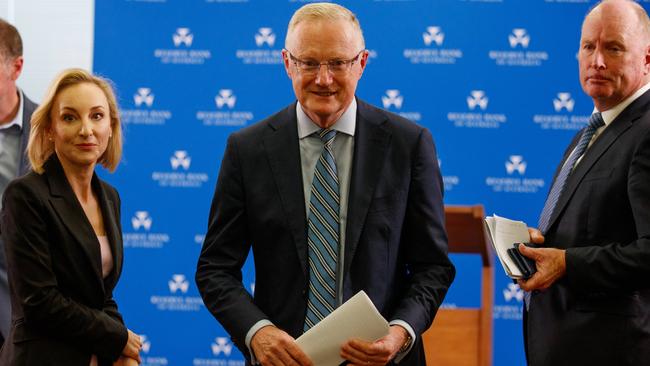
When Philip Lowe cautiously lifted the cash rate on a Tuesday afternoon weeks out from the 2022 election, he not only sealed the fate of an unpopular Morrison government, he sealed his own.
From that moment on the Reserve Bank of Australia governor became part of a bigger plan by the man who set to become Treasurer – Jim Chalmers – who had little choice but to keep the focus of rate pain firmly on the central bank.
Chalmers seized on the May 2022 rate hike – the first tentative move after it had been stuck at almost zero for 16 months – declaring it had “shredded” the Coalition’s economic credentials.
“When things are going well in the economy Scott Morrison takes all the credit, but when things get difficult he takes none of the responsibility,” Chalmers said in the heat of the election battle.
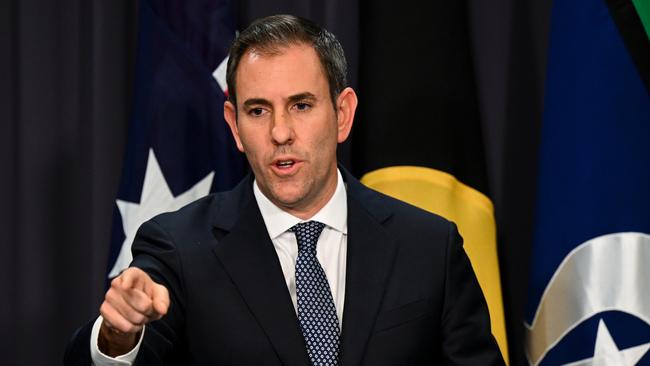
But in the background inflation was fast-bubbling up and choking through the economy. And Chalmers was astute enough to reason Australia wasn’t immune from the inflation wave already surging through the rest of the world. This guaranteed that a hiking cycle was coming. Chalmers also knew that in Australian politics interest rate rises were poison for governments.
And while no one yet was calling a recession, after years of free and easy money under Morrison, these hikes were going to be hard for debt-heavy homeowners to adjust. It was going to be even harder for Labor.
As Anthony Albanese and Chalmers were sworn in to government on the Tuesday morning following their election win, the world had already shifted from a Covid recovery to a full blown cost of living crisis. And now that the Coalition and its key financial players had been vanquished, they needed a new villain.
Governor Bullock
Treasurer Jim Chalmers on Friday finally brought to an end Philip Lowe’s reign as Reserve Bank governor. Chalmers named Lowe’s deputy Michele Bullock as the nation’s ninth governor since the central bank was spun out of the Commonwealth Bank in 1960. She is also Australia’s first female Reserve Bank governor.
Born in Melbourne, Bullock moved to Armidale in northern NSW with her family when she was nine. She went to Armidale High and then studied economics at the local University of New England, where her father also worked. She joined the RBA in 1985 and the central bank quickly sponsored her to study at the London School of Economics. It was only last year she was appointed Australia’s first female deputy governor following the sudden resignation of likely successor Guy Debelle who sought to join Andrew Forrest’s green energy push.
Ahead of leaving Debelle calculated that Lowe would get an extension, meaning that the 56-year-old former punk rocker at heart may lose out his moment in history.
Chalmers said Bullock is the person best-placed to take the Reserve Bank into the future. “Michele is an outstanding economist, but also an accomplished and respected leader”.
“Her appointment best combines experience and expertise with a fresh leadership perspective at the Reserve Bank,” he said.
Since the early 1990s the two RBA governors that came before Lowe – Glenn Stevens and Ian Macfarlane – had been extended and while both did not serve out their full second term, they notched up a decade which was enough for multiple economic cycles and to develop a seamless succession strategy. Lowe turns 62 in October and three more years would have neatly taken him up to 65.

Lowe’s exit marks one of the most extraordinary chapters of the Reserve Bank in decades. It underscores a major test for an institution that is respected in business and on global capital markets as the keel, hidden working below the waters, that has underpinned Australia’s modern economic story.
Lowe’s mandated seven-year term expires September 17, but the decision not to extend the term of a central bank governor in the midst of an unpopular and difficult hiking cycle has skirted the very edge of political interference when it comes to the running of the nation’s most powerful financial institution.
The decision to not renew the term of a governor who has openly made himself available to continue with the job has broken with more than three-decades of unbroken stability inside the central bank.
The call is set to test the RBA’s hard won independence from Canberra and insiders say Bullock will have to move quickly to reassert the bank’s authority.
At its most raw, the decision has the optics of removing a sitting governor who was simply doing the unpopular job that he was paid to do by deliberately slowing the economy when it was most needed. It has defied Australia’s scorecard where the economy outranks other developed nations in terms of navigating the post-Covid bubble.
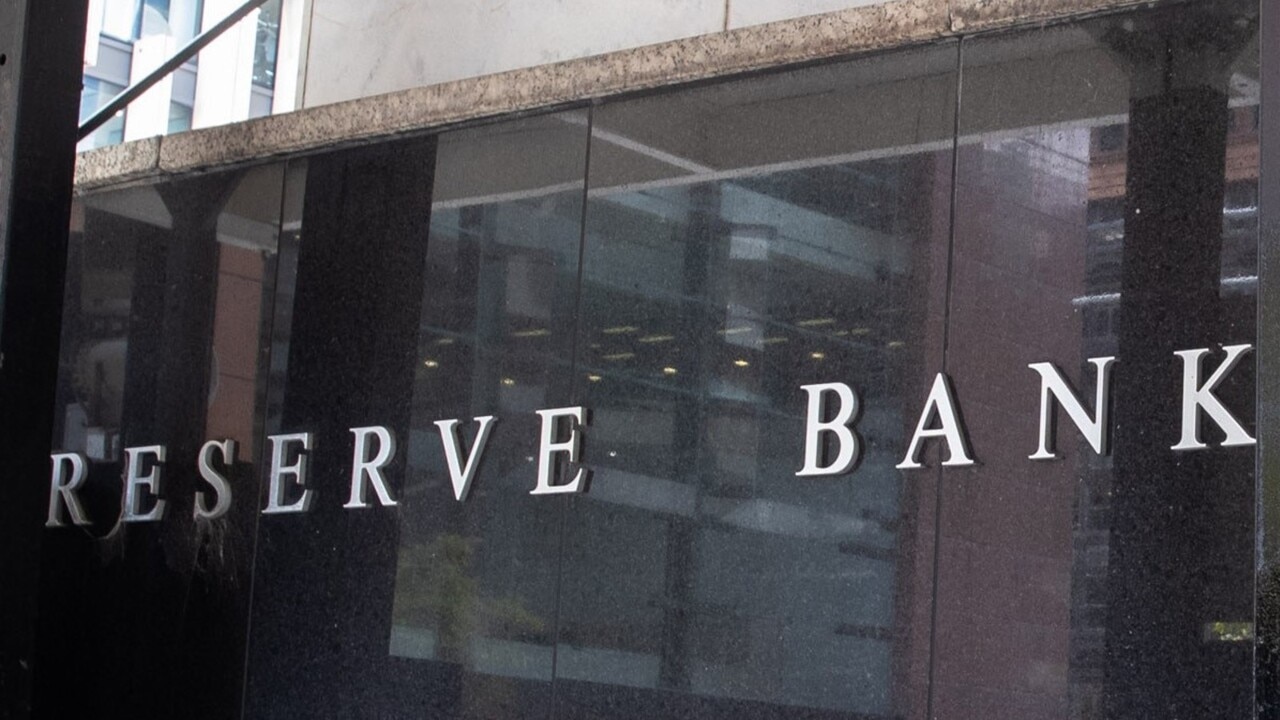
And by swinging the axe Chalmers has also shown how tough he is prepared to play politics.
Indeed the treasurer has deposed one of the most Labor-friendly central bank bosses since Paul Keating installed Bernie Fraser in the late 1980s. Now a matter for history, the relationship between two like minded men was tested when Fraser quickly raised rates into an election year as Keating was attempting to win back his prime ministership. Keating lost to John Howard and Fraser retired shortly after.
Prior to the Covid pandemic senior figures in the Morrison government were quietly grumbling about Lowe. They thought the RBA boss was giving too many speeches and when he did he often spoke outside his lane while highlighting shortfalls in infrastructure investment, climate change and the need for business to drive up sluggish wages growth. At the same time the RBA was trying to inject life into an underperforming economy through a round of rate cuts while the Morrision government was trying to pull money out as it aimed for a budget surplus.
That all changed when Covid pandemic hit in early 2020 and for the first time since the global financial crisis the RBA and Canberra were again firmly on one team. Lowe and the treasurer Josh Frydenberg were pulling in the same direction to fortify the economy from the unknown and it roared back to life. But it was curious ramp-up in Lowe’s rhetoric buried in a speech in October 2020 and followed up in board statements the next month where Lowe said the cash rate would not increase “for at least three years” or 2024. These words would be the trigger for his undoing.
‘Circuit breaker’
Under Chalmers’ 14-month watch the cash rate has moved higher 11 times. Before the May election hike, it was 0.1 per cent. Then it steadily jumped from 0.35 per cent after the election to a more than decade high of 4.10 per cent. This marked the steepest rise since the overnight cash rate target was adopted in 1990 to become the main instrument to influence the Australian economy.
As a newly-minted Treasurer Chalmers has been able to keep the blame on the previous government for creating the toppish conditions for allowing this inflation bubble to happen. He has also been meticulous to preface every discussion about the “independent Reserve Bank”. Chalmers has also had the windfall of booming commodity prices to help prop up the Budget and cut into the nation’s ballooning debt. Even as the economy has slowed unemployment has held at record lows. These tailwinds have been critical in boosting Chalmers credentials as a sharp economic manager.
But the blame game and Covid is now running out of steam in the suburbs and recent internal Labor polling has shown the anger is quickly shifting onto the government. Nervous backbenchers already fearing having to campaign on the tails of a recession, have been pushing Chalmers to make his move on Lowe.
Seasoned Labor campaigners like Bill Shorten have freely criticised the rate rise cycle saying it was time to take a “deep breath” and that the central bank’s actions were creating bigger problems for ordinary Australians. Victoria’s Dan Andrews, whose economy represents a quarter of Australia’s output, said Lowe’s RBA was “smashing families” in his state and the central bank was creating more problems that it was trying to solve.
Others have felt the space to chip in on the central bank after a frustrated Chalmers said it was up to the RBA to explain itself following a surprise June hike.
And while the weight of money is betting the interest rate cycle is now nearing its peak, there will be more pain to come in the suburbs as borrowers keep rolling off ultra-low fixed rates they entered into during the pandemic.
Then the second round effects will surely follow in the coming 12-to-16 months with unemployment set to start drifting up as the economy grinds to a halt – more poison for governments. The next election is due by September 2025.
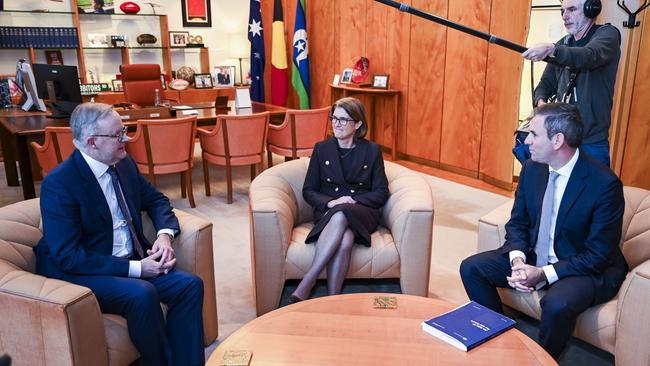
By using the tiny window available to push out the man hurting Australia by punching it with rate hikes this offers the “circuit breaker” needed, Labor insiders say.
So too putting a female into the powerful finance role will be a historic moment for the Albanese government who may not have the chance to shape the RBA in such a significant way again.
Of course everything comes back to politics. A female will help soften the hard image of a central banker serving out more pain in the suburbs, they add.
They say too there has been increasing tension between Chalmers and Lowe, particularly after the banker returned from a summer break with a new determination to push the cash rate higher-than many were expecting. However that wasn’t the driving force behind the top level shake-up. In recent months Chalmers repeatedly said he had a “mountain of respect” for Lowe and the two work well together.
On a personal level, I have really valued my working relationship with Phil - Treasurer Jim Chalmers.
On Friday Chalmers said Lowe goes with his respect and gratitude. “On a personal level, I have really valued my working relationship with Phil”
“He is…a terrific guy and has handled himself impeccably”. Lowe was on a “short list of appointable candidates”, he added.
Unusually, an scheduling oddity means the two will attend a G20 finance meeting summit in the western Indian city of Gandhinagar early next week.
Country boy
Philip Lowe grew up a long way from Sydney as the eldest of five children in the NSW Riverina town of Wagga Wagga in the late 1960s. His father owned and operated an old-style petrol station at the bottom of Fitzmaurice Street. Through high school Lowe would work the forecourt filling up tanks through all the petrol fumes. He’d clean windscreens in the blinding heat or freezing colds of the town where moody Murrumbidgee River snaked around.
Lowe went through the town’s Catholic school system and was at Trinity Senior High where he became interested in economics including the notion that the right combination of market forces and government intervention could make the world a better place. He joined the RBA straight from high school in 1980, and the bank sponsored him through a commerce degree at the University of NSW. The promising Lowe was later sent to the Massachusetts Institute of Technology to undertake a PHD with legendary liberal economist and self-described Keynesian, Paul Krugman as his adviser.
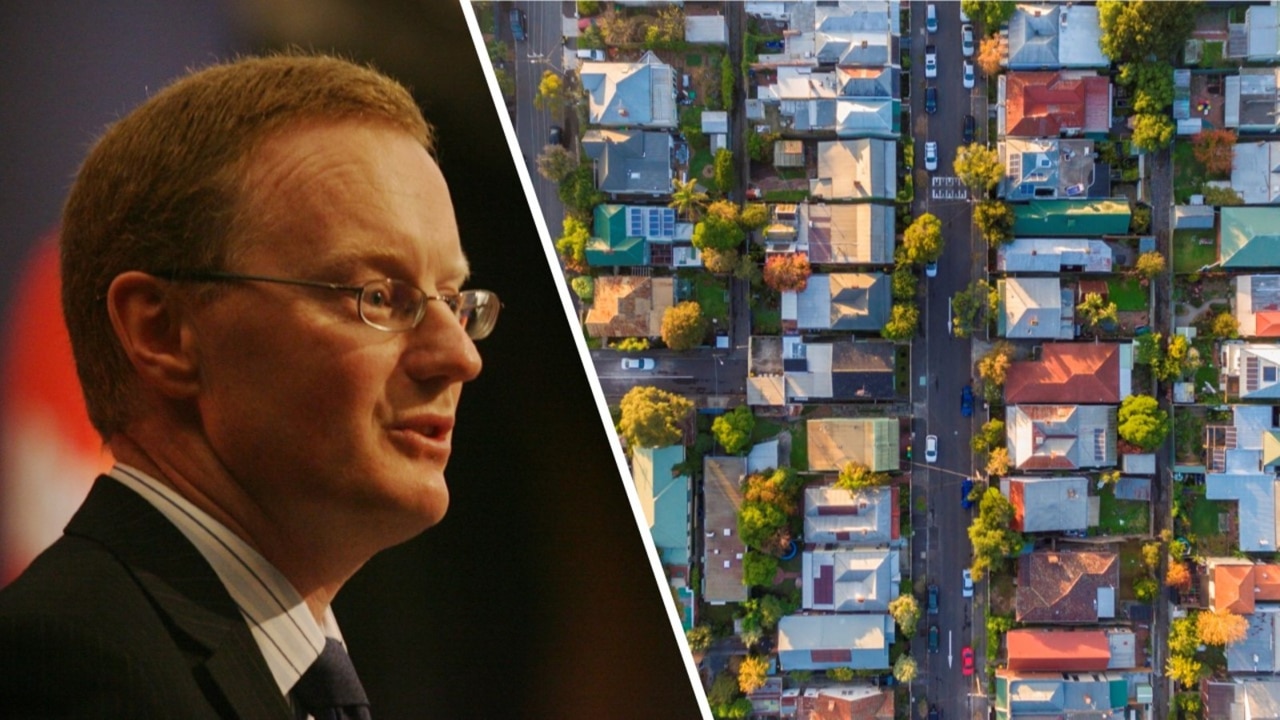
Those who have worked with Lowe describe him as the hardest working, decent and well meaning public servants in Australia. Others talk of a formidable intellect and his sometimes awkward shyness is more about being a good listener. No matter who you are, Lowe thinks deeply about what you are saying before he responds, one said. Another called out his directness in calling a situation. Like all good central bankers he is guarded when he speaks. Several RBA board members The Australian has spoken to raise Lowe’s thoroughness and unquestionable integrity. They said Lowe rose to the Covid crisis and enabled Australia to deliver distinguished performance compared to other developed economies.
Chalmers said he worked through the decision in a “methodical, measured, considered and consultative way”. This too meant he intended to “take seriously” the views of his Cabinet colleagues.
As an internal candidate Bullock is the compromise that markets will view as allowing normal RBA succession processes to take place, albeit in a forced way. The decision too was helped by circumstance. Chalmers’ preferred outside candidate Finance secretary Jenny Wilkinson was understood to be cool on the move out of Canberra into the Sydney glare of the RBA. Chalmers too saw Treasury secretary Steven Kennedy as more useful to the government in his existing role.
Even so, markets are yet to have a firm read on Bullock. She has given speeches that could be interpreted as dovish (erring on lowering rates) while a more recent speech on the inflationary threshold of unemployment rate was seen as hawkish (keeping rates higher).
“We have no clear direction on her policy leanings,” Citi economist Josh Williamson said.
She has also been direct in her comments saying unemployment will need to climb to at least 4.5 per cent to bring inflation back under control.
This compares with the dovish Lowe who has said he was prepared to go slower than other countries in raising rates as he attempted to guide inflation back to target. This was in order to protect gains in the jobs market, Lowe says.
Economic bogeyman
There is a claim that central bankers are cut off from the real world. In Australia they literally are.
The 20-story Reserve Bank headquarters sitting at the top of Sydney’s Martin Place, is more empty than busy these days. But there’s a curious journey to get to the executive suite.
To make it to the top – including the vast boardroom where the interest rate calls have been made for decades – you need to negotiate security barriers through the airy marbled foyer and catch a lift from the ground floor. But part way through the journey you will need to change to a security lift to reach the very top.
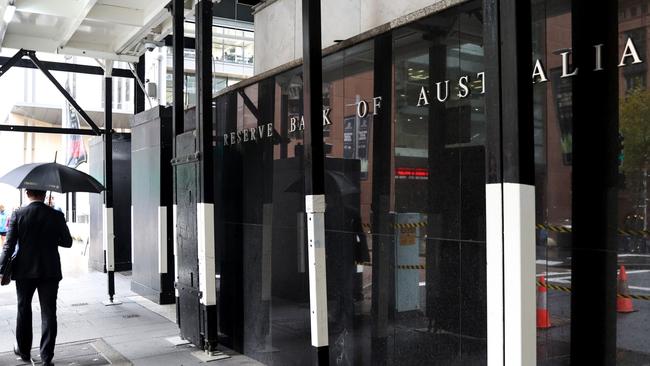
When the modernist high rise opened in 1964, it was an oddity on the Sydney skyline for its sheet glass and aluminium lines. Even today stepping into 65 Martin Place feels like stepping back into a world of harmonographs that threaded through Australia’s first decimal paper banknotes.
Still “65 Martin” has come to symbolise the Reserve Bank and all its distance from the machinery of Canberra. And while the commercial banks like Commonwealth Bank, Westpac and ANZ that used to jostle for real estate around it have long packed up to more flashy buildings in other parts of town, the Reserve Bank remains unmoved. 65 Martin is the Reserve Bank.
But over the six decades the building is tiring out as well as representing a risk to those that work there. A massive $260m renovation approved in 2020 has now blown out to nearly double the amount as asbestos is being removed. For most of the past year the RBA has been hidden behind heavy black scaffolding.
Prior to the Covid pandemic Lowe would often catch the train into the RBA, a short trip from the eastern suburbs.
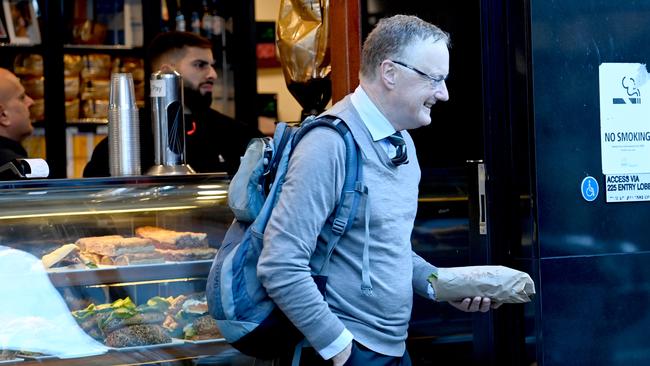
Here Lowe was just another ordinary, but bookish, city worker stopping at Martin Place station directly below the RBA headquarters. Indeed so convenient was the stop that just next door to the underground concourse of the train station was a network of the central bank’s vaults. These days they now sit mostly empty, with banknotes held more securely and the bulk of the gold long sold off. The rest of the gold, $6.2bn worth at last count, is being housed far away under the watch of the Bank of England.
Lowe too was previously a regular feature at the food court just next to the station, often stopping by picking up a sandwich on the way in.
As the cash rate shot past 2 per cent last year, paparazzi started snapping the public servant first on the way to work then on the golf course one the weekend or as he was taking out his bin in front of his eastern suburbs home.
Lowe was now suddenly the bogeyman on the nightly news, telling Australians they shouldn’t be asking for a payrise and their big savings buffers meant they could afford higher rates. The housing crisis would be solved by people renting out their spare rooms, he said. Like a doctor breaking bad news, Lowe’s direct comments were the response of an economist, not a politician.
The intense focus on Lowe was perplexing and “as bad as it has ever been”, one former central banker says. One big four bank boss tells The Australian: “We were waiting to be made the villains through all of this but it has never come”.
As rates moved ever higher Lowe was stalked by TV crews around town between meetings. His $1m wage and generous RBA pension scheme were all fair game. There were demands that Lowe should meet with mental health advocates and more charities and warned by community advocates there would be more deaths as a result of his actions.
A familiar catch cry was that promise made by Lowe from October 2020 coming out of the Covid pandemic that the cash rate would remain rock bottom until 2024.
This was the first time calender-based forward guidance was used so specifically by the bank and would continue to haunt Lowe through the hiking cycle. There was hollow support from Chalmers through also this as some bank insiders saw this as allowing a vacuum to exist to keep the focus on Lowe.
As the governor’s notoriety grew, so too his public world started closing off. He became more guarded. There were security concerns about the media stalking his house. Lowe stopped taking the train. He packed his own lunch on the days when there wasn’t a meeting.
Barrenjoey lunch
Then in early February Lowe fever exploded when he attended a private lunch at investment bank Barrenjoey at the newly finished ANZ Tower just 8 minutes walk from 65 Martin. The meeting was not unusual, indeed Lowe publishes his diary four times a year on the RBA’s website, showing a regular catch up with business politicians and media. That month he met with Labor MP Linda Burney, the CBA chief executive and property develop Harry Triguboff as well the Annika Foundation into the prevention of youth suicide.
But the Barrenjoey lunch came just two days after the RBA pushed through a hawkish hike (economist shorthand for more rate rises to come). Lowe was scheduled to make two separate and parliamentary hearings in Canberra the next week and had many months earlier decided to use this as his platform to outline his view for the year ahead rather than a National Press Club speech he had started to regularly give in early February.
The private lunch with the Barrenjoey traders and a roomful of the firm’s clients fuelled the burning resentment around the elitist central bank, particularly its approach to communications where Lowe had previously been accused of dropping the ball.
That weekend Chalmers said of the meeting “there was a broader issue about how the bank communicates the context for its decisions”, adding this was something for the RBA Review to take in. Following the firestorm Lowe became even more cautious on how his appointments were managed.
While the economy was being eaten away by high inflation, Lowe knew Australia was not in any more unusual position than the rest of the developed world. Indeed what looks like Australia’s peak inflation rate of 7.8 per cent in the December quarter, was below the double-digits reached in the UK and just over 9 per cent in the US. However Australians are much more sensitive to moves in interest rates given the bulk of mortgages are tied up in variable rates, compared to other parts of the world where the skew is in fixed mortgages.
Lowe’s view was reinforced in April when he caught up with other central bankers in Washington following meetings of the G20. This too helped form a view that while there were more likely further rises to come, Australia was likely to avoid the more painful 5 per cent cash rate mark. New Zealand already passed 5 per cent in April, the US hit it in May while the Bank of England hit it in June. The Bank of Canada hit 5 per cent this July.
The RBA paused at 4.1 per cent this month, most economists are tipping just two more hikes to come likely in August and September, taking the cash rate to 4.6 per cent. And then that’s it before the cuts begin later next year.
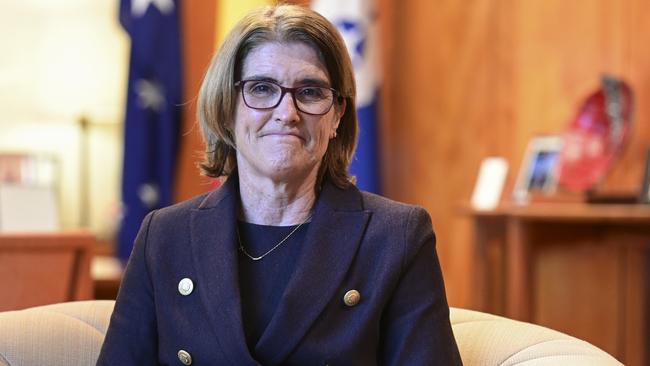
‘Exit surprise’
Liberal Senator Andrew Bragg has been a vocal critic of the push to replace Lowe, particularly had Chalmers gone the way of putting in a senior bureaucrat. Such a move would would have crossed into political interference.
“We’ve never had a situation where a governor has been removed during a tightening cycle. And I believe that will do nothing to assist in the fight against inflation,” Bragg tells The Australian.
Business figures have been genuinely concerned about the campaign to replace Lowe, saying it’s the RBA’s job toput the brakes on an overheated economy.
Australia’s central independence was well known and respected, they added and this was a strong attraction for foreign capital. “The minute you show you’re not serious about tackling inflation funds would dump Australia for elsewhere,” one senior finance executive says.
Before the decision ANZ chief Shayne Elliott said it would be a shame if Lowe was removed. “He is working to the mandate that he has been given”. However Elliott believes the “general direction” of interest rates were unlikely to change under Bullock’s leadership. Commonwealth Bank chief executive Matt Comyn said the risks to the economy for allowing persistently high inflation to set in “are very significant”.
The chairman of one of Australia’s biggest companies who declined to be named, says Lowe made a major “mistake” when he issued forward guidance that rates were to stay low.
It showed some naivety forecasting that far out. And this was this move that created an opening for a political attack against the RBA over the traditional targets of the big four banks. The chairman says there have been several forecasting errors since then, but “directionally” Lowe has been getting to the right destination.
The conflict now is between the government trying to get wages moving and Lowe trying to reign them back in, the chairman said. But the bottom line is “it is vital for Australia” the RBA can be left to do its job and stay independent.
RBA Review
The Review of the Reserve Bank initially took hold in September 2021 as a recommendation by the Paris-based OECD as part of a regular survey of the Australian economy.
“Now would seem like an appropriate time for a review of Australia’s monetary policy framework, given the institutional and structural changes that have occurred in the economy as a result of the pandemic,” the OECD said as part of its assessment. It also noted the RBA for the first time had deployed unconventional policy instruments such as bond buying and forward guidance as additional monetary tools.
Frydenberg was open to the idea but initially resisted taking it into the political arena of an election. But Chalmers saw a probe aligning with Labor’s line of attack around institutional governance and transparency. It later became a much more tangible idea for Chalmers as he staked out his political ground. He would use the extraordinary economic response to the Covid pandemic as a trigger for a bigger review on the Reserve Bank, marking the first in more than 40 years.
Part of this would include a proposal to review the 2-3 per cent flexible inflation target range under the spotlight. This policy measure is widely regarded as delivering more stable inflation and lowering unemployment in Australia.
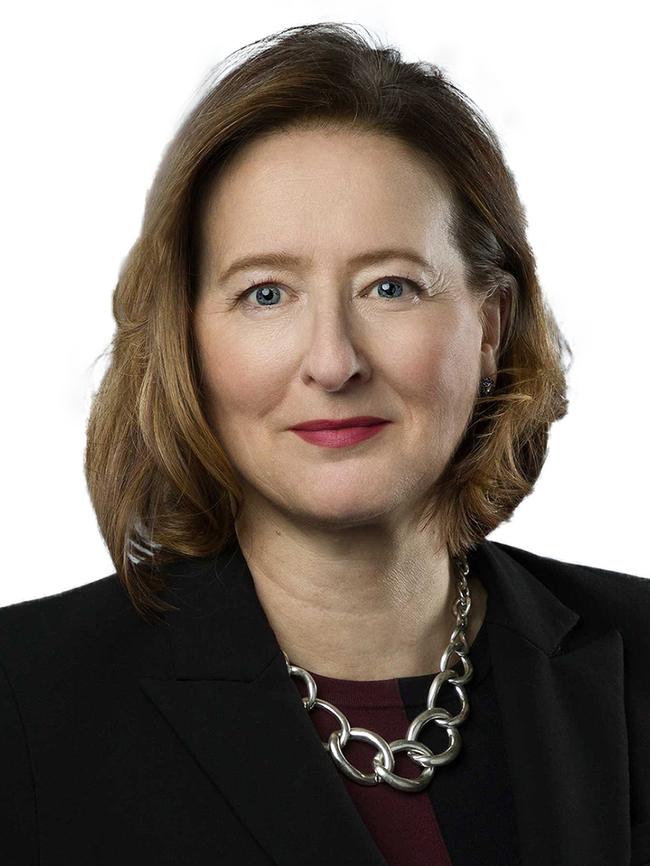
It was one of the foundation economic reforms of Liberal Treasurer Peter Costello on par with the Hawke-Keating float of the Australian dollar. Now it was to be put under review.
Two months after taking office Chalmers, as promised, gave the green light to the Review of the Reserve Bank. He assembled a formidable panel headed up by former Bank of Canada deputy governor, Carolyn Wilkins to give the international perspective. It also included top macro economist Renee Fry-McKibbin who heads up economics at ANU and public service reform guru and economist Gordon de Brouwer.
It was two academics and one deputy governor now lined up to determine the future of the Reserve Bank and deliver a scorecard on Lowe.
The Review was wide-ranging and was determined to put everything under the microscope including the RBA’s culture and the forward guidance used by Lowe through the pandemic.
Lowe described the panel as “first class” and immediately offered his full co-operation and that of his bank staff. It was an opportunity to take stock and make sure the bank was fit for purpose.
We don’t always get it right, but we always try to get it right -RBA governor Philip Lowe.
But murmurs were already beginning about the tight time frame for such a seminal review. From the day it was announced the findings were to be handed in to Chalmers in less than eight months. One former RBA board member described the process and findings of the report as “stupid and unworkable”.
Another former board member was more measured, saying the performance of the RBA shouldn’t be assessed in some sort of “imaginary ideal of perfection” but rather should have been benchmarked to international peers.
Those with knowledge of the matter said it was important to have the review completed before a mid-year deadline Chalmers had set before a call was being made about the future of Philip Lowe.
And when the findings were finally released in late April, the Review argued the central bank indeed to be built out for the modern age.
Here it claimed the governance structures hadn’t evolved in line with the economy, It had 51 recommendations that would fortify and make the RBA better placed to face the challenges of the future. It felt rushed and recommendations were untested.
And similar to the Bank of England’s structure it called for a split of the board with the creation of a bank oversight body and a separate board to make monetary policy decisions. It said interest rate meetings should happen less frequently, unlike the monthly meetings Australia has (except January). The flexible inflation target should remain intact, albeit with some minor modifications.
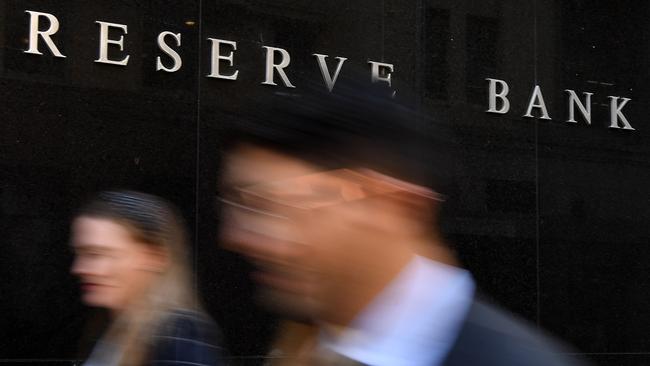
Even so it found that the RBA is a well‑regarded institution, with high quality staff, that has served Australia well. The biggest misstep it called out was Lowe’s issue of the forward guidance that rates would stay rock bottom “until 2024”. While other central banks around the world were issuing bespoke forms of forward guidance, there was little evidence of a debate, consultation or assessment of the risks of the promise. Forward guidance “carries significant reputational risks” and if it was used again the RBA would need to thoroughly assess the implications, the Review cautioned.
It also accused the RBA as being “ initially slow” to respond to rising inflation from 2022 by holding off on rate rises when other banks had moved. However it noted the RBA wasn’t alone to miss the path of inflation. It called for an overhaul of the RBA’s data models. It said too the RBA placed too much emphasis on wages as a driver of persistent inflation. Just this month an internal Treasury memo of inflation emerged that also reached a similar conclusion. It said as supply shocks fall away “wages growth will again become the main driver of inflation” in Australia.
And while the Review made criticisms of the RBA’s top down culture where some staff felt disempowered, it was hardly enough to hang Lowe on. One prominent chief executive noted a deep dive into any institution – private or public – would uncover areas for culture to be improved.
Indeed the Review concluded the RBA’s “decisive actions at the start of the COVID-19 pandemic were critical in supporting Australia through the crisis”.
There were shortcomings in decision-making processes during the crisis, the Review added but these were made during periods of “extreme uncertainty”.
A former RBA board member told The Australian given the context of the extraordinary macroeconomic events of the Covid pandemic Lowe’s forecasting error is not surprising. “His (Lowe’s) mistake was mostly in sharing his expectations so frankly and clearly with the Australian people,” they said.
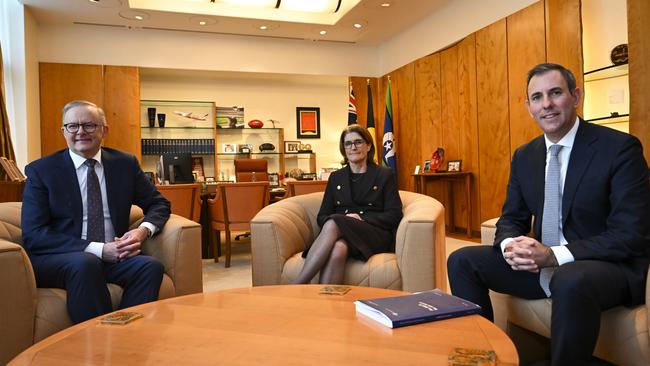
New board
On its release Chalmers in April said the Review saw a number of opportunities to strengthen the RBA. But given the central bank’s independence he said the “substance” of the review’s recommendations would fall on the bank to implement.
On the same day as the 300-page RBA Review findings were released, Chalmers also named two new RBA board members to replace two outgoing independent members Wendy Craik and Mark Barnaba whose five-year terms were expiring.
Incoming board member Iain Ross was the Fair Work Commission president for a decade until last November. In the early 1990s Ross worked alongside ACTU head Bill Kelty as assistant secretary of the peak union body. The second appointment Elana Rubin is a highly accomplished company director and former Afterpay chair. Rubin moved into corporate life from assistant secretary of the ACTU during the 1990s and was a previous chair of the nation’s biggest super fund AusSuper. Of the RBA’s nine member board, two spots are RBA’s officials and one is the Treasury boss.
This week Lowe set the ball rolling on adopting a timeline for some of the recommendations – even as he firmly knew – he wouldn’t be around to see them through.
This includes reducing the number of board meetings to eight from 11; longer deliberations and a media conference will be held by the new governor – Bullock – to explain each rate decision. Central bankers have long resisted more communication around rate decisions fearing it would stray too much into the territory of forward guidance.
It was only this year, particularly from March, Lowe began processing his own acceptance that he was unlikely to be asked to stay on. And from there he gradually became more relaxed about the issue when asked.
Following the Review being released Lowe told reporters the job was a great honour and privilege, but it was entirely up to the government whether he would continue to serve after September 17.
Some believed he was planning to use the moment to not put himself forward for the position to avoid attention coming at the bank. However it is understood Lowe believed the job of taming inflation remained unfinished and he wasn’t about to give up.
“If I was asked to continue, I would. If I’m not asked to continue, I’ll find another way to contribute to Australian society,” he said.
Lowe offered the same response to a question following a speech in Brisbane earlier this week. However with months of intensifying speculation about who was set to be named and when the axe would fall Lowe’s patience on the issue was outwardly wearing thin.
Lowe firmly stands by his decision to raise rates and points out they have been in the context of what is happening globally.
“Everyone is dealing with the same issues. So, when I talk with the other central bank governors, we’ve got the same issues and we’ve dealt with the same problems,” he says.
“I don’t take it personally, “ he adds. “I’m just one person in an institution that every single day tries to do the best job for Australians”.
“We don’t always get it right, but we always try to get it right”.
Additional reporting: David Rogers
johnstone@theaustralian.com.au


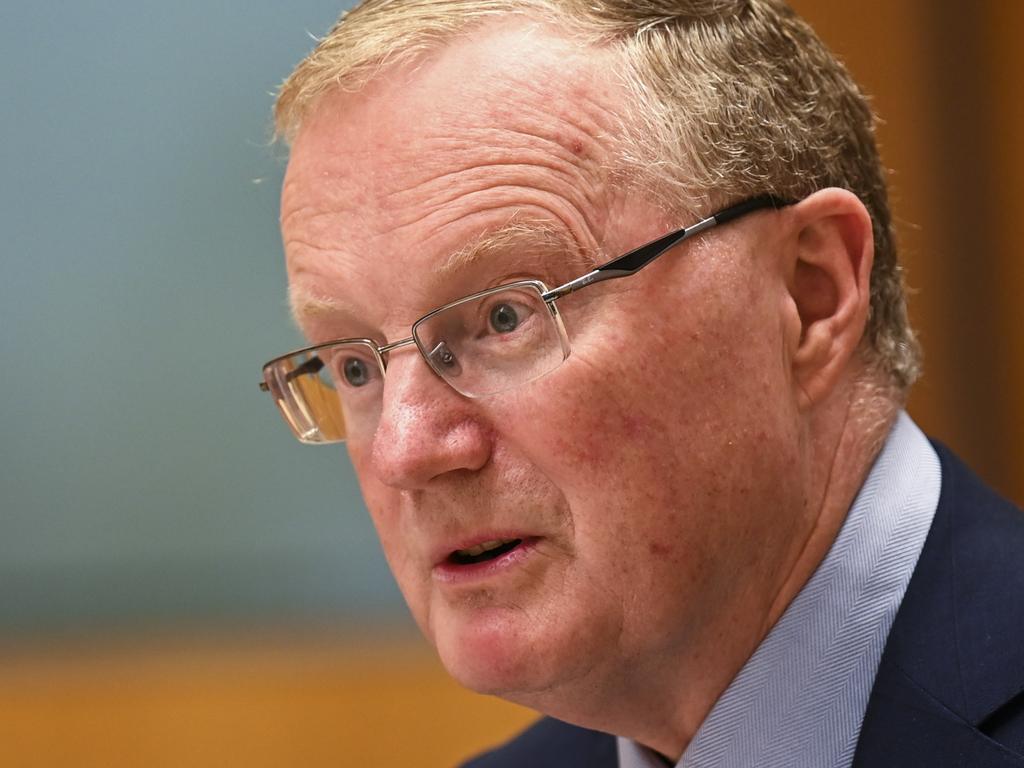

To join the conversation, please log in. Don't have an account? Register
Join the conversation, you are commenting as Logout